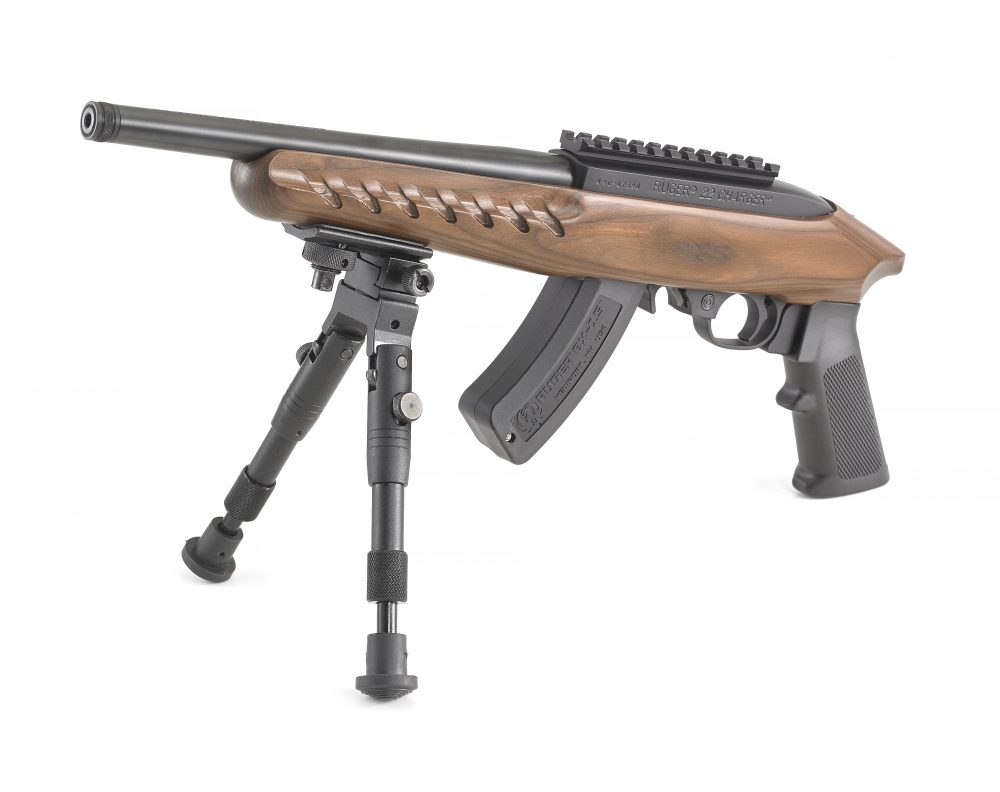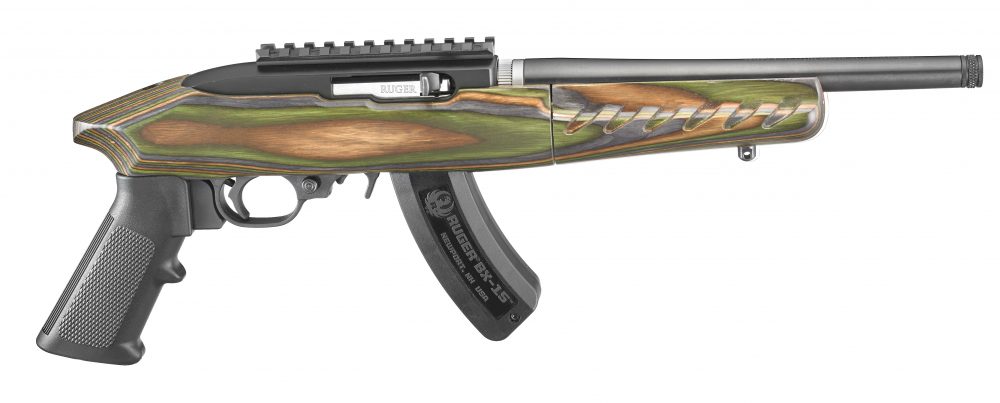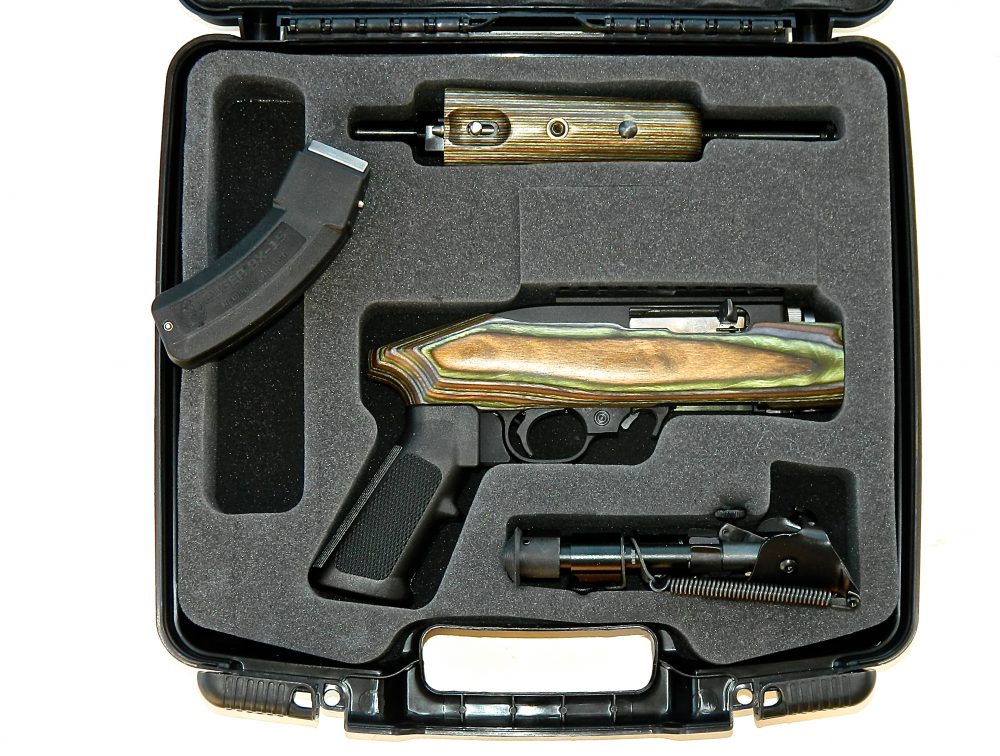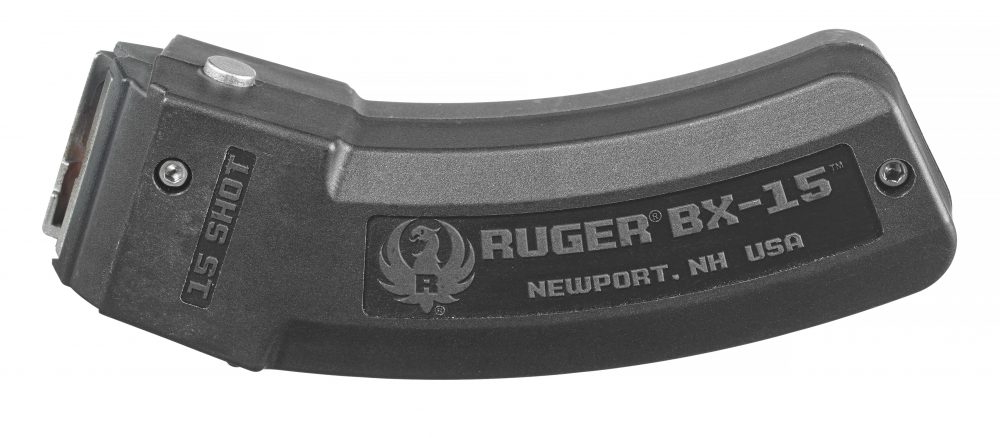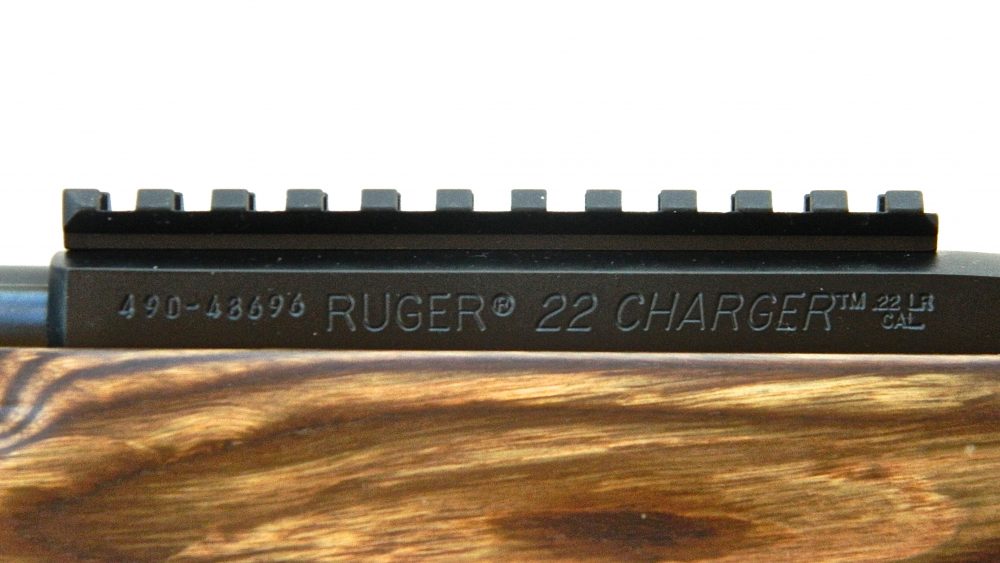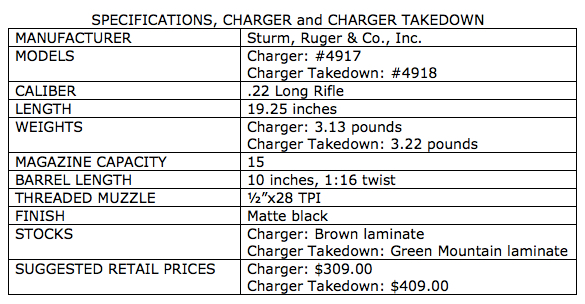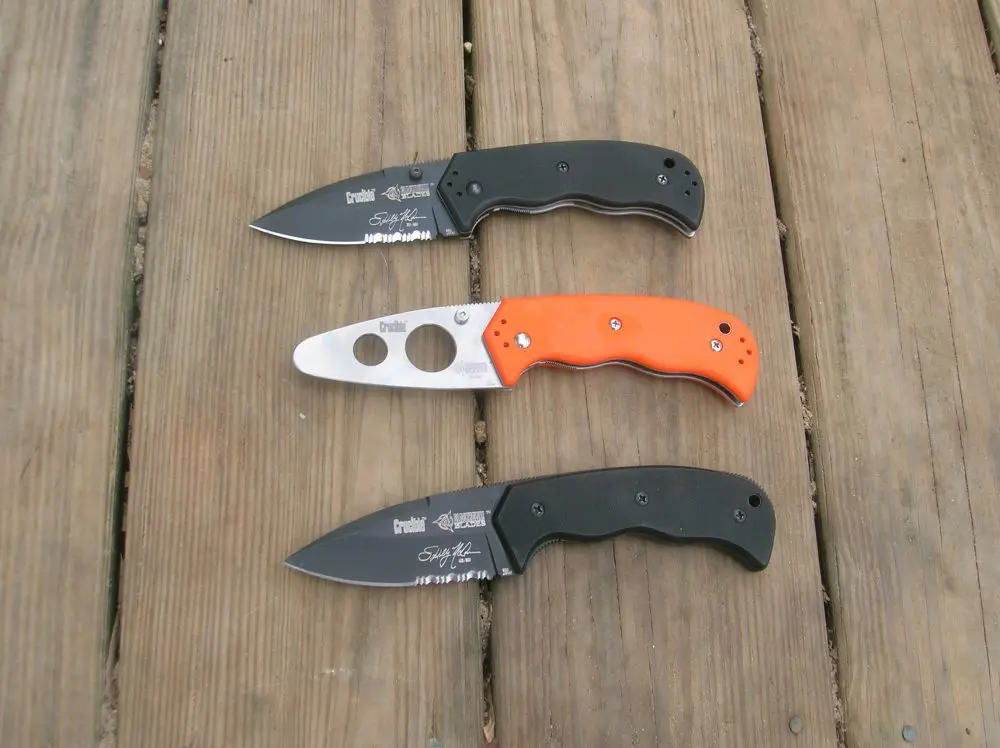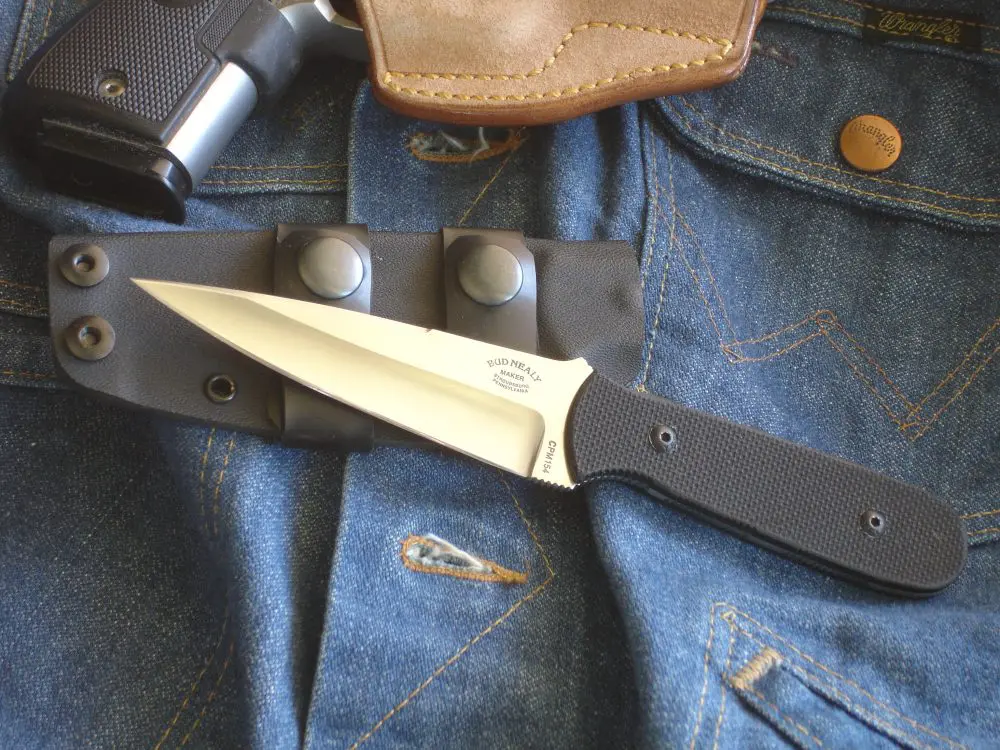The Ruger Charger pistol is not exactly new. It was introduced in 2007 but then discontinued. A few months ago, Ruger released the re-engineered .22 Charger pistol with enhanced features and introduced the new .22 Charger Takedown pistol. I acquired one of each and spent quite some time putting them through their paces.
Charger has brown laminate stock. Photo: Ruger
Table of Contents
DETAILS
Both of the new .22 Charger pistols are built on the legendary Ruger® 10/22® platform, have an overall length of 19.25 inches and feature a 10-inch barrel. The end of the barrel has the standard 1/2″x28 thread pattern to accept most popular muzzle accessories, including suppressors. A cap is included to protect the threads when a muzzle device is not installed.
The Charger (Model 4917) has a redesigned brown laminate stock with a standard A2-style pistol grip. Pistol grips from other manufacturers may be substituted for the A2 grip if you so desire. The matte black receiver features a factory-installed Picatinny rail for mounting the optic of your choice. The Charger weighs 3.13 pounds and comes with a tan zippered soft case, manual and gunlock.
The new .22 Charger Takedown (Model 4918) has all the features of the standard model plus the quick-disconnect feature found on the full-sized 10/22 Takedown® rifle. The .22 Charger Takedown features a Green Mountain laminate stock and comes in a custom fitted hard case, a manual and gunlock. The Takedown tips the scales slightly more than its brother, at 3.22 pounds.
Charger Takedown has Green Mountain laminate stock. Photo: Ruger
Although the Charger pistols work with any 10/22 magazine, the pistols come with the new BX-15™ magazine—a 15-round version of Ruger’s BX-25® magazine. Both pistols have a sling stud on the forend for mounting a bipod (included). The BX-15 magazine is optimal for shooting off a bipod due to its shorter length.
The procedure for assembling the Takedown is: As viewed from the front, turn the adjustment knob clockwise as far as it will go. With the bolt locked to the rear, insert the barrel and rotate it clockwise until it clicks into place. Turn the adjustment knob counterclockwise—with finger pressure only—as far as possible.
Bolt is engraved with Ruger’s 10/22 50th anniversary logo.
Once properly adjusted the first time, the barrel assembly can be removed and replaced without turning the adjustment knob. To remove the barrel assembly, lock the bolt to the rear, push forward on the recessed locking lever under the forend, and rotate the assembly counterclockwise.
Both of the test pistols had Ruger’s 10/22 50th anniversary logo engraved on the bolt. If you’re lucky enough get one of these, I’m sure it will have some collectors value in the future.
Charger comes complete with soft-sided zippered case and bipod.
OPTICS
I topped the Charger with a Redfield Revolution/TAC™ 3-9X40mm. Although actually designed for tactical use on a precision rifle, the Revolution/TAC has very precise ¼-MOA adjustments that I believed would push the Charger to its limits. I mounted the scope in a Leupold Mark 2 Integral Mounting System.
On the Charger Takedown, I went with the Aimpoint ACO (Aimpoint Carbine Optic), which was introduced late last year. While it doesn’t have some of the features found on other Aimpoint optics—like night vision compatibility—it still will run for over a year left on constant on at its brightest setting. It’s a great sight for those who don’t need NODS or an optic submersible to 150 feet. The ACO has a two MOA dot.
Charger Takedown comes in padded fitted case.
AMMUNITION
I assembled various .22 Long Rifle loads to shoot through both Charger pistols. These included high and low velocity, hollow points, solid, coated, and plain lead. Several loads were current production, some a few years old, and a couple very old. One box of Remington cartridges had a handwritten price of 78 cents on the box, and it’s been a great while since they sold for that low price.
End of the barrel has 1/2″x28 thread pattern to accept most popular muzzle accessories, including suppressors. Cap protects the threads.
RANGE EVALUATION
For a control load, both pistols were zeroed with Remington Golden™ Bullet .22. It is accurate and works well in all the auto-loaders I’ve tried it in. Both pistols were fired off the bench with their included bipods from 25 yards. The Charger was up first. As measured with my RCBS trigger pull scale, the trigger broke at 5½ pounds after some take-up, though it seemed a bit heavier.
The very first round failed to fire with a light strike of the firing pin, barely marking the rimfire case head. I immediately became skeptical, but that was the one and only malfunction of any kind—with either pistol—of the entire evaluation.
I fired five-round strings and was very pleased with the accuracy, with eight of the nine loads going into less than an inch. The one load that did not was the aforementioned old Remington load, and it went into an inch and a half.
Both Chargers are supplied with new 15-round BX-15 magazine.
Three- or even five-round strings will usually show a firearm’s accuracy potential, but to really put it to the test, I like to fire ten-round strings. Loading the BX-15 mag with ten of the control loads, I was rewarded with a group that measured just under ¾ inch. If not for one round that strayed slightly out to seven o’clock, a dime could have covered the entire group. Clear optics, fine crosshairs, and the Charger’s inherent accuracy proved a good combination.
Switching over to the Charger Takedown, the first thing I noticed was its great trigger, which broke at just over three pounds with very little take-up. As expected, accuracy with the Takedown was not the equal of the Charger due to the less precise aiming point of the ACO’s red dot. Still, all rounds went into about one and one-half inches.
Picatinny rail allows for mounting a variety of optics.
PLAY BALL!
What are .22-caliber pistols of this size actually good for? Their compact size allows them to be easily carried—along with a quantity of ammo—by a backpacker. Due to their size and light weight, they’d also be right at home in the emergency survival kit of an aircraft or boat, or even stored in a bug-out bag. But perhaps the biggest reasons to own one are because we’re Americans, we can, and they are just plain fun.
After testing them off the bench, I loaded the magazines and brought out a Birchwood Casey Ground Strike Hex target. The hexagon-shaped ball is made from a self-sealing material that bounces and flies erratically when hit. I repeatedly tossed the ball to the top of the downrange berm to see how many times I could hit it before it reached the bottom. If it reached the bottom, it was a strike, but if I managed to hit it over the berm, it was a homerun. Nothing tactical, no procedures, just good old-fashioned fun!
Whether for a serious purpose or just fun plinking at the range, check out the Chargers at a dealer near you. Most likely you’ll walk out the door and head for the range with a big grin while yelling, “CHARGE!”
SOURCES:
STURM, RUGER & CO., INC.
(203) 259-7843
www.ruger.com
AIMPOINT INC.
(703) 263-9795
www.aimpoint.com
BIRCHWOOD CASEY
(800) 746-6862
www.birchwoodcasey.com
LEUPOLD & STEVENS, INC.
(503) 526-1400
www.leupold.com
REDFIELD
(877) 798-9686
www.redfield.com

